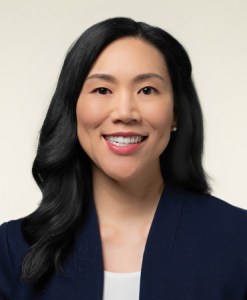In late 2013, California Attorney General Kamala Harris filed a lawsuit against Corinthian Colleges, Inc., one of California’s largest for-profit college companies. The suit alleges that Corinthian misrepresented job placement rates to students and investors and targeted economically vulnerable students, such as single parents, veterans, and low-income individuals. While the lawsuit hasn’t been resolved, it raises important questions about the growing issue of student debt, particularly as they relate to for-profit colleges and low- and moderate-income students.
As seen in the figure below, individuals from low-income families made up the largest share of for-profit college students in 2011-2012, according to the National Postsecondary Student Aid Study. Among for-profit college students, almost half (46 percent) of the dependent students came from families where parents made less than $30,000 a year; in contrast, 11 percent came from families where parents earned more than $106,000 a year. This concentration of low-income students in for-profit colleges is especially noteworthy as students who earn their bachelor’s degrees at for-profit institutions are more likely to borrow than those who attend public and private nonprofit colleges, and those who borrow tend to accumulate higher average levels of debt.
Source: U.S. Department of Education, National Center for Education Statistics, 2011-12 National Postsecondary Student Aid Study (NPSAS:12).
Default rates also tend to be higher at for-profit colleges, as seen below. In 2011, the default rate at proprietary institutions was 13.6 percent, compared to 9.6 percent at public institutions and 5.2 percent at private institutions. According to the College Board, for-profit institutions accounted for 11 percent of all students enrolled in 2009-10, but 43 percent of the students who defaulted by the end of Sept. 2012.
Source: U.S. Department of Education. 2-year cohort default rate is the percentage of a school’s borrowers who enter repayment on certain federal loans during a particular federal fiscal year (FY) and default or meet other specified conditions prior to the end of the next fiscal year.
We know that higher education is a critical component of economic mobility for lower-income students, but the concentration of low-income students at for-profit colleges is alarming, especially given the related trends of higher debt and default at these institutions. The community development field can play a role in promoting college access and completion among low-income students by supporting asset building programs (such as children’s savings accounts and college savings programs) as well as cross-sector efforts that strengthen neighborhoods and schools to prepare students for college success.
You can learn more about trends in student debt and default, particularly as they relate to low- and moderate income students, in Student Debt and Default in the 12th District (Research Brief 2013). You can also roll over the states in the map below to interact with data on schools, borrowers in default, and the default rate.
Two-Year Official Cohort Student Loan Default Rate by State (FY 2011)
Hover or click over a state to see data on schools, borrowers in default, and the default rate.
The views expressed here do not necessarily reflect the views of the management of the Federal Reserve Bank of San Francisco or of the Board of Governors of the Federal Reserve System.
